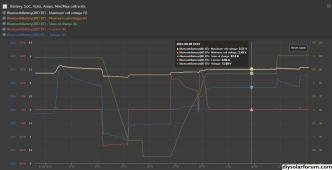My panels are ETL listed, and I am using MIdnite breakers and boxes and busbars, so I am not using any non UL/ETL products.Did you have to use any non Victron products, or non listed Victron products to complete your installation?
Even something like their Lynx Distributor doesn't have ETL/UL listing of any sort that I'm aware of, which is a total bummer.
Last edited:





